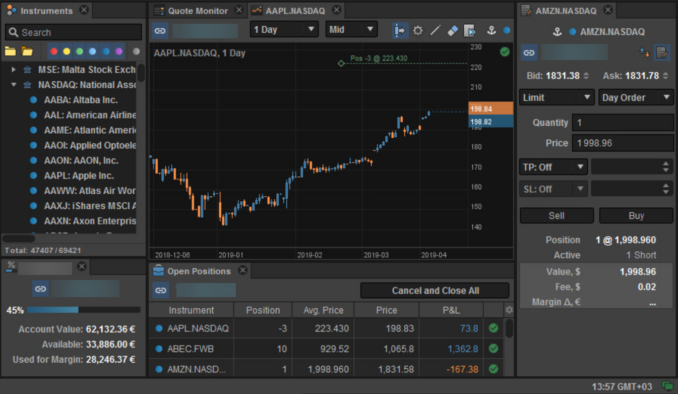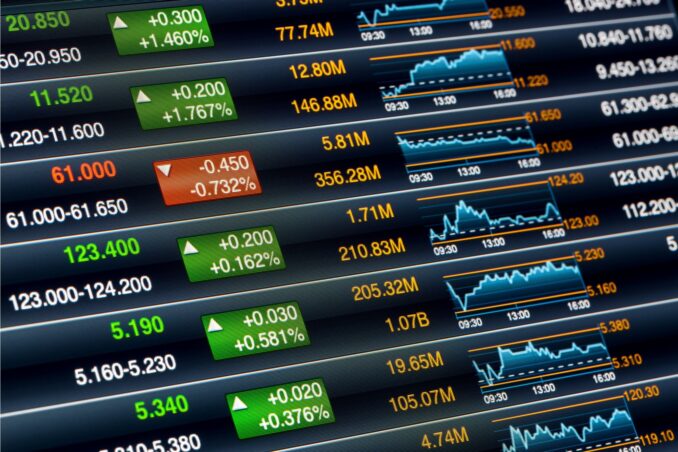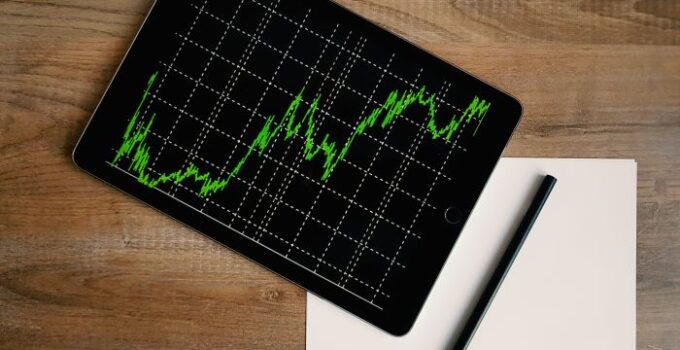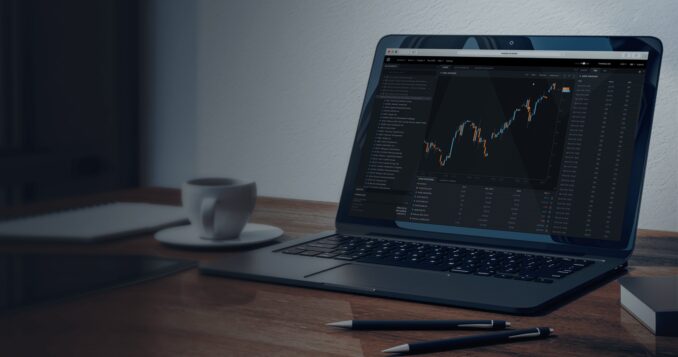Exante is an international, multi-asset brokerage company that offers access to over 600,000 financial instruments across more than 50 global markets. Founded in 2011, the company is headquartered in Malta and licensed and regulated by the Malta Financial Services Authority (MFSA). The broker also has offices in Cyprus, Hong Kong, and the UK, and holds licenses from the CySEC (Cyprus), SFC (Hong Kong), and the FCA (UK). On top of that, it is compliant with Mi-FID II, a financial services regulatory framework for institutions operating in the European Union.
In this review, we will look closely at Exante’s trading platform – particularly its reporting tools and functionalities in its trading terminal. Reporting is a crucial function in a trader’s toolkit, and precision and accuracy in reporting can increase the success of traders no matter their skill level. Hence, we feel it is necessary to evaluate Exante’s reporting capacities. If you are interested in using the broker’s services, you can read on to find more now.
Exante’s trading platform: overview

Source:youtube.com
Instead of offering the MT4 and MT5 trading platforms for its clients, Exante.eu has its own in-house platform available on mobile and on desktop. It is compatible with iOS and Android, and those on desktop can download it on Mac, Windows, and Linux.
Exante’s trading platform is an award-winning one. In the past years, it has won multiple awards focused on its trading terminal alone, such as the Investment Award in 2020 for Seamless Trading Experience, organised by Broker Awards.
The trading platform menu itself consists of module families that span several categories: Instruments, Trading, Reports, and Quotes. In each category are the modules themselves. When it comes to Exante’s platform reporting functionalities, we can take an in-depth look right away.
Reporting capabilities of Exante’s trading terminal
Under the module family ‘Reporting’, Exante’s trading terminal offers five reporting-related modules. They are Summary, Portfolio, Margin Report, Orders, and Trade Blotter. Traders can very easily access these modules on the left-hand side of their trading terminal interface.
Summary
The Summary module displays a comprehensive board of information that concerns the account’s status. It includes, at a glance, positions, available funds, margin size, and available balance (NAV). In the world of trading, this is a standard summary for traders.
The summary also offers separate sections for each instrument type. Instruments are categorised as such: Cash, Stocks & ETFs, Options, Bonds, Funds, Currencies (Forex), Metals, and Futures. As Exante offers over 600,000 instruments, this categorisation is helpful.
Each instrument section displays open positions for traders, including the asset itself, the quantity bought and sold, the position, P&L, projected daily P&L, and values in the trader’s chosen currency. The interface is customisable, and traders can toggle their display settings through the gear icon on the top right to display the metrics they want shown.
Exante’s Summary is overall a compact window that contains a lot of information that traders can get from just one look. The Summary is also colour-coded. This is a positive aspect for those who are looking for a quick update on their portfolio performance.
Portfolio

Source:design.careers360.com
The Portfolio module displays all a trader’s open positions and working orders. It includes all primary information, such as the quantity, position, average price, initial value, and P&L of a trade. This is a report that is built for convenience and efficiency – traders can cancel and close all trades and working orders at the click of a button on the top right. They can also, of course, cancel individual orders.
Margin Report
Exante then has a Margin Report module. According to the broker, it is the simplest way for a trader to track their margin utilisation for every account.
Exante offers two ways for the display of this module. Firstly, you can access a compact, collapsed view that shows only the most important metrics (such as account value, daily P&L, available value, and % of account used for margin as well as its value). If you would like a more detailed view of your margin utilisation, you can choose the expanded view. This shows a detailed report of margin utilisation sorted by asset, with margin amount displayed in the trader’s preferred currency.
The Margin Report module is a worthwhile one that not all trading terminals offer – not in the format of a concentrated report, anyway. And it is a good addition to the trading platform for easy comparison of margin utilisation for different assets in one account. For those with multiple accounts, they can compare margin utilisation in the Summary module.
Orders
The Order module displays a comprehensive collection of information about all the orders placed, whether they are completed or not.
True to Exante’s innovative nature, the module is customisable, and traders can filter and sort orders by any column. Some examples include sorting orders by fulfilment, by order type, instrument, quantity, or time when order was placed. Filters include placed, pending, working, filled, cancelled, and rejected orders.
Traders can also enquire about their orders in detail when they right-click on their order row and choose to see an order in context. In this case, traders can have a detailed look at the performance of the instrument through a price chart, and they can create price alerts right from the window.
For those who monitor multiple open positions, this is an excellent way to track open positions from one place with extensive detail.
Trade Blotter

Source:youtube.com
Finally, Exante offers a Trade Blotter module, which displays information about all executed trades and transactions. The main draw of this reporting tool is that the advanced system of filters that the broker offers. Every order, accompanied by Order ID, P&L, Price, Quantity, User, Commission, and Client Account Code can be sorted. Traders can also choose fixed periods (‘Today’ / ‘Yesterday’ / ‘Last 7 days’) and view their executed trades and transactions in the period.
For those looking to track their trading journey and keep track of their progress, this Trade Blotter report gives detailed information on every transaction that has taken place. This is an easy way for traders to discover their trading frequency.
Overall review
Concluding the detailed review of Exante’s reporting capabilities, we can say with confidence that the broker has a comprehensive and thoughtful trading terminal. Reporting is made simple and concise with Exante’s interface, and users can easily make comparisons between accounts and within accounts. There is also the option to view reporting in different currencies, as Exante offers multi-currency trading from a single account. The clarity and precision that Exante’s reports provide can greatly aid sophisticated traders on their journey and help them monitor their open positions and working orders with ease.






